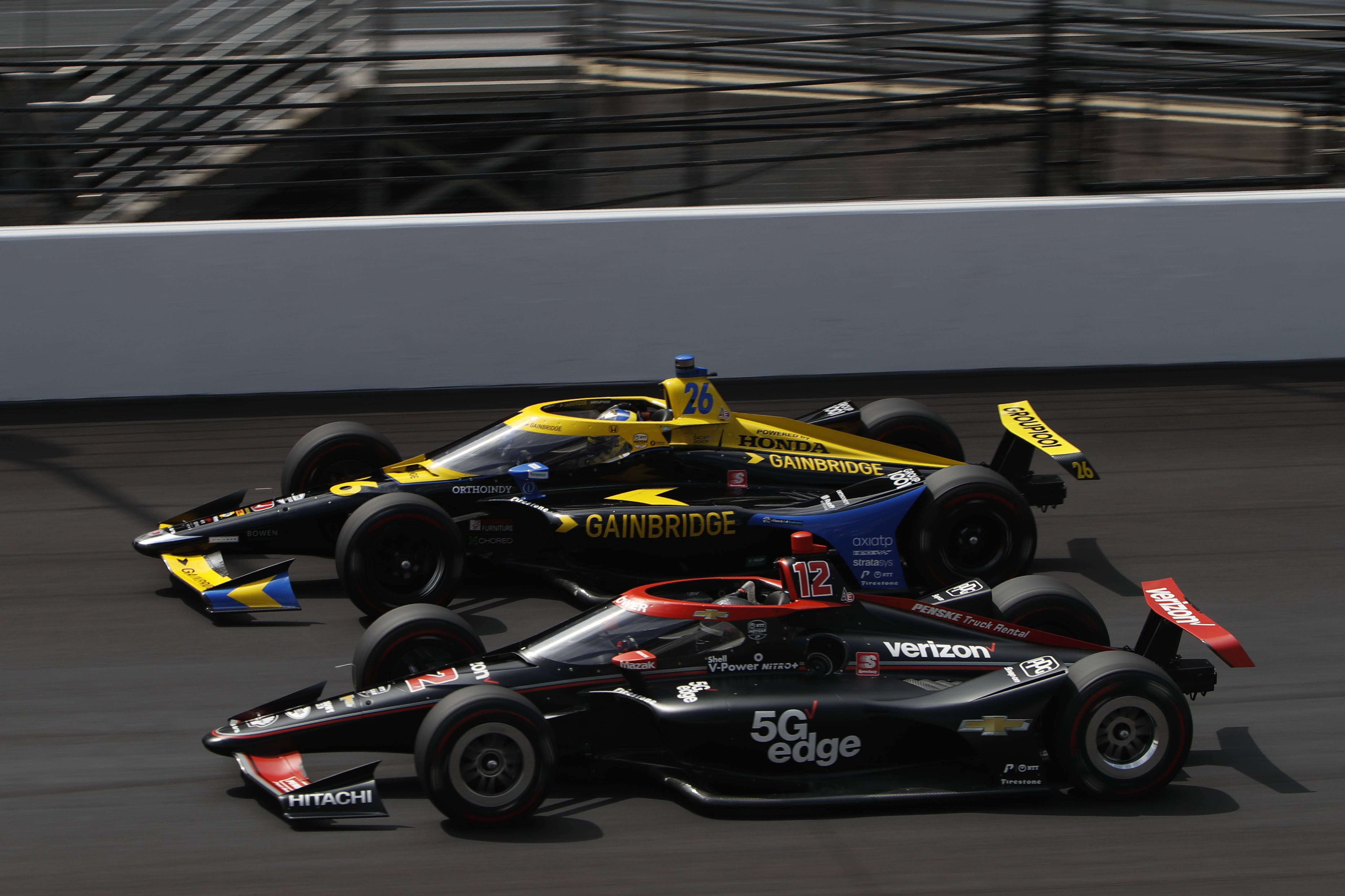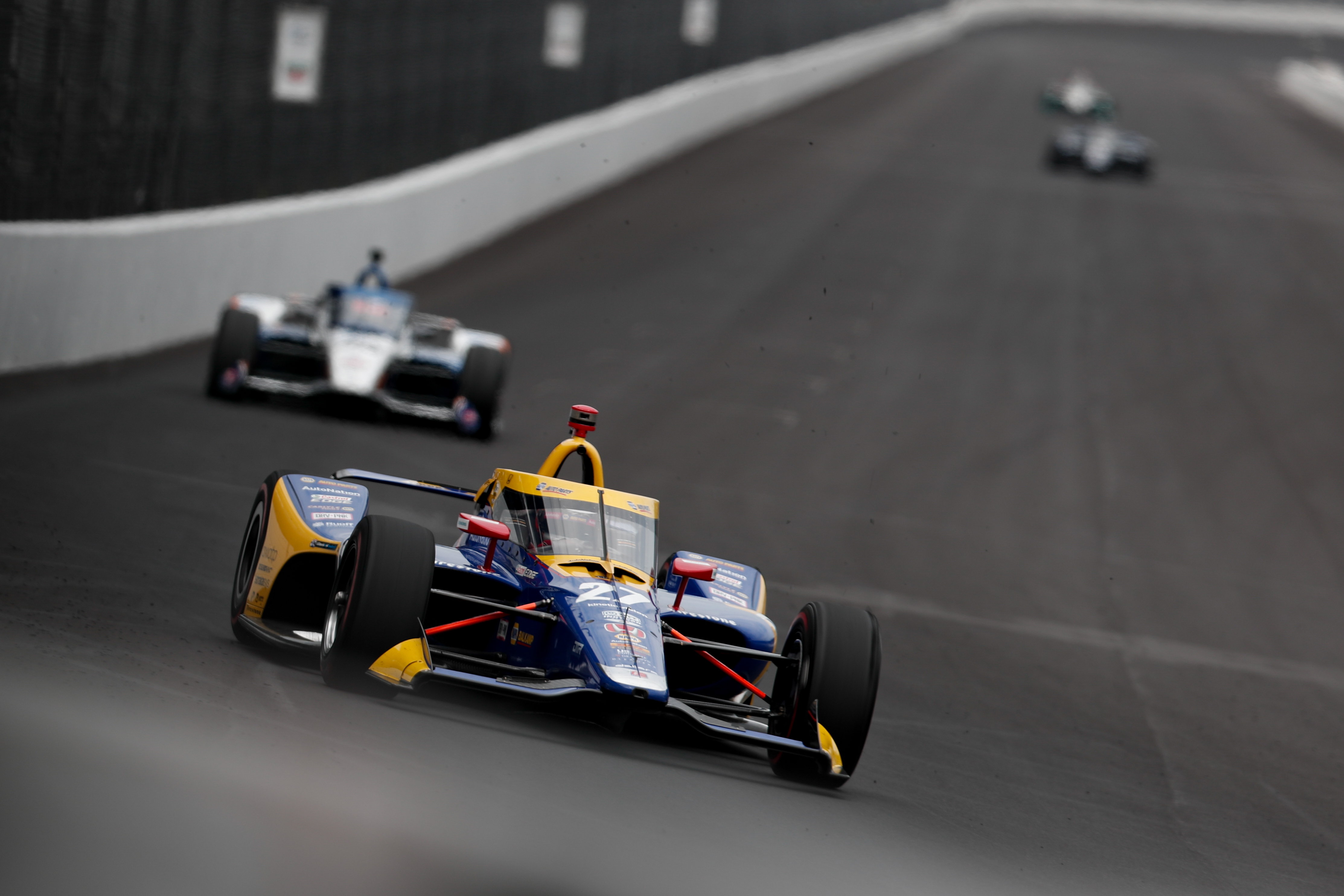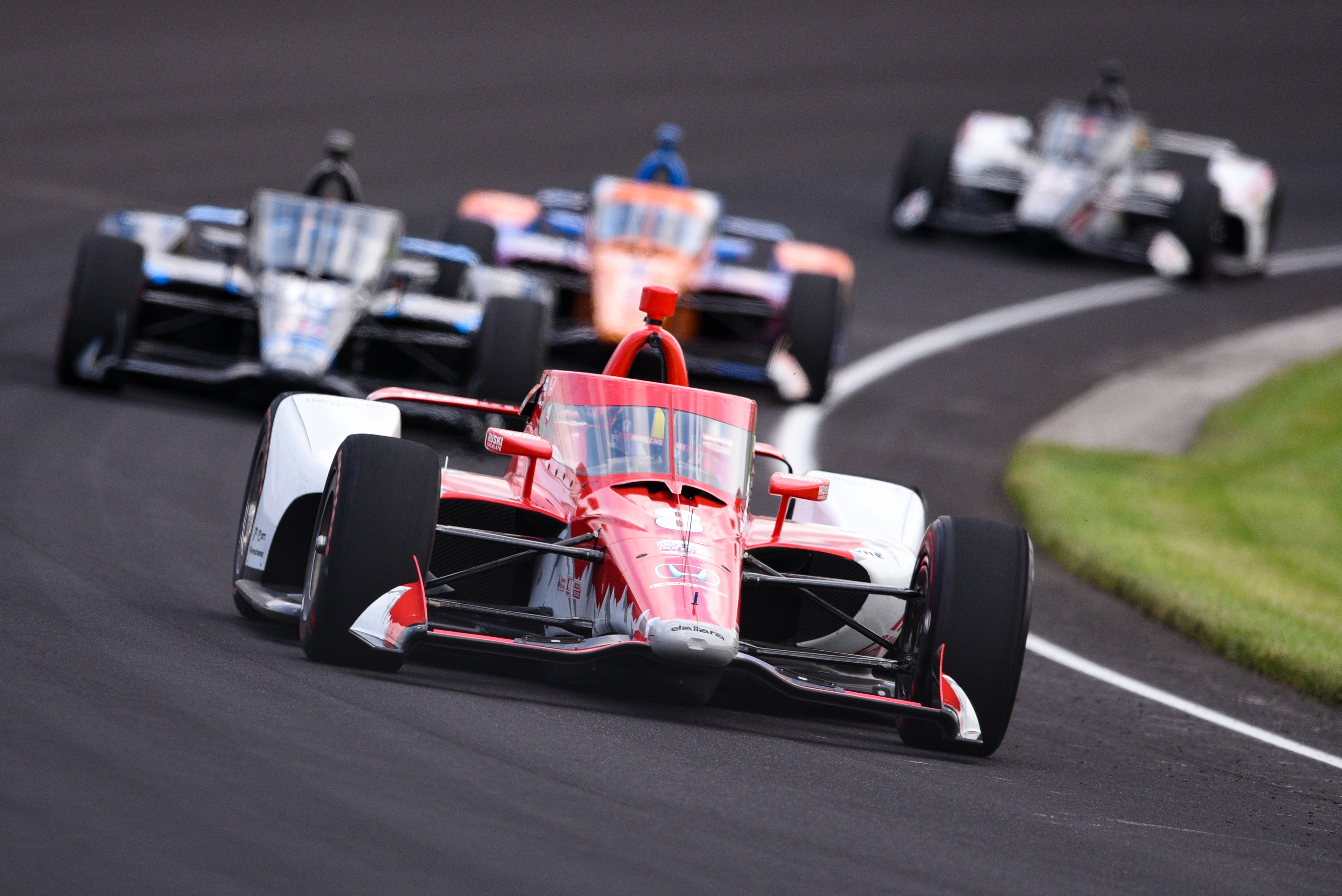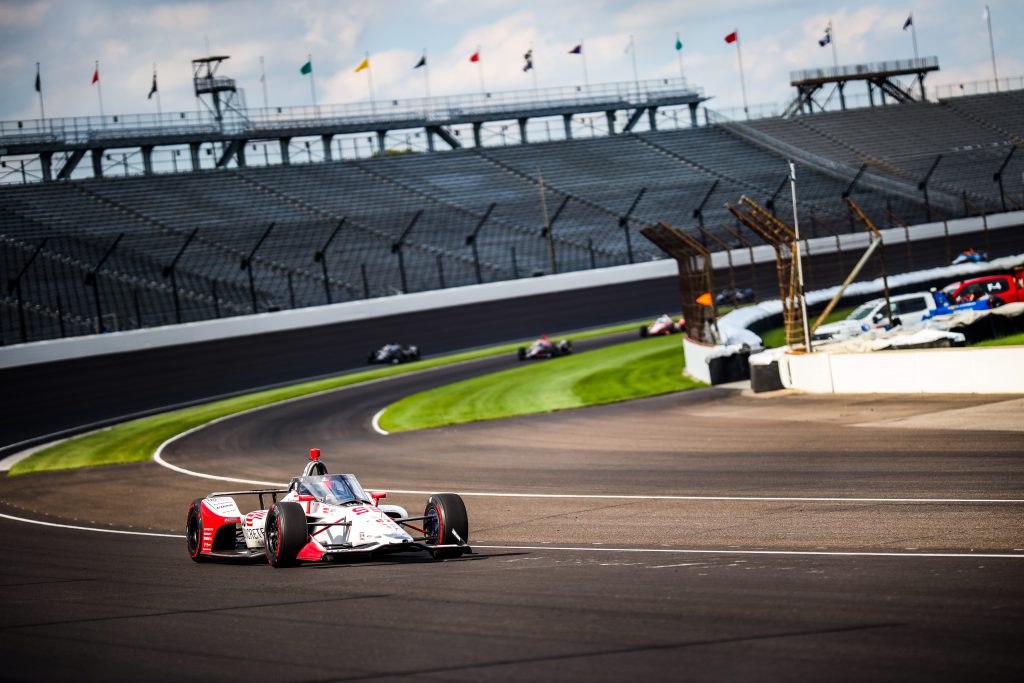After 13 out of 15 Honda-powered cars topped the order in Fast Friday practice, it was hard not to think that something was afoot and the Chevrolet-powered cars would come back and provide a challenge for qualifying. But in fact, Chevrolet wasn’t a factor, as one key philosophy from Honda helped send it to the top.
It’s a typical Indy 500 in many ways. Just like the teams with car set-up, every year the engine manufacturers fight for thousandths of seconds in a bid to win one of the world’s biggest motor races. At the moment, in IndyCar, that’s Honda and Chevrolet.
This year, Honda rolled off with strong speed all around, Fernando Alonso picking out the Andretti Autosport team ahead of the rest from the word go on Wednesday, before it sealed the top four spots in qualifying.
Again, as early as Wednesday, Rahal Letterman Lanigan’s Takuma Sato believed Honda had made a step forward from last year and he couldn’t be more right. It has topped every session at Indy so far this year.
Because the manufacturers are so driven in fighting for such small chunks of time, one often trumps the other year-on-year, leaving the other to catch up.
You might think this year’s advancement comes from some sort of engine part and it’s that simple. But really, a whole philosophy outside of the engine has proven key for Honda this year.

David Salters, technical director, Honda Performance Development, told The Race: “We have a great team at HPD, smart and competitive.
“We are privileged in having a group that can focus on many aspects of performance: powertrain, simulation, electrical, aerodynamics, vehicle dynamics and simulation, materials, and data analytics.
“This year, we have tried to improve all areas where we think can help our teams be competitive, including the engine, aero and vehicle dynamics (using our DIL simulator) and competitor analysis, to name a few.
“Also, we work with a group of intelligent engineers from our partner teams, who help guide us. We all try and have the same focus.
“We have focused on the areas that we can influence to make the car go faster, it’s a sum of parts, it’s engineering, not magic.
“We try to set the correct priorities, make decisions, create and deliver.
“We work, and can draw on, a wide range of racing programs where HPD participates: IndyCar, DPi, GT3, F3, F4, off-road racing. It keeps us open-minded.
“There is not secret to this stuff, it’s solid engineering foundations, validated simulation, design and development, manufacturing and production, process and method, decision-making, but mainly extremely competent and motivated people and working as a team going in the same direction and bringing in energy.
“It is easier to say than do though!”
In essence, Honda has worked on things outside of the grunt to optimise the performance.
What it’s added up to – along with the usual development in terms of the power unit – is that the Honda teams in qualifying have been able to carry slightly more downforce than the Chevrolets while maintaining a higher speed, thanks to the boost in performance. With their speed advantage, the Honda cars can afford a bit more drag to provide more stability and grip through the corners.

It still requires input from the teams to extract the maximum from the package, but without doubt when maximised the package to have has been the Honda this year, a switch from the last two years in qualifying.
“You know, most people, I hope they realise that you start working on this year’s Indy 500 pretty much as last year’s Indy 500 is unfolding,” said HPD president Ted Klaus. “And it’s a very special event. And you can see just how difficult it is.”
Asked by The Race if the coronavirus outbreak had affected the workload or direction of the project following last year’s Indianapolis, Klaus added: “Yes, we’ve been able to pull together as a team and work effectively even during COVID, it’s kind of an interesting thing because it shows you what’s possible when you have a strong team culture.
“Not just HPD, but all of our partner race teams and a little bit of a hiccup with us not being able to get in certain testing tools. You know, IndyCar put a moratorium on aero windtunnel testing, but we were able to resume testing in our driving simulator, which was extremely effective. And then, kind of a shout-out to all the people that have been preparing our infrastructure.
“And then finally, our production people. We actually weren’t working, we completely closed down our facility and they had all of those emotions of kind of falling behind, but then they got back at it.
“We opened our facility back up, and they got after it and you know, they’re the ones that have built these engines that are showing great speed and consistency.
“But in the end, it’s really how you bring it all together in the sim in the engine dyno with production folks, years of experience precisely putting the engine together and then you can see how the teams just earn it with tenths, hundredths, thousandths of a second.”

Ultimately it’s that blend of cohesion that has made the difference in qualifying this year and allowed Honda to offer such a strong package. When the engine formula has been the same for a long time, it’s tough to reinvent the wheel, but the group of 200-odd employees at Santa Clara in California have well and truly delivered. It’s also unusual to hear of an engine manufacturer focusing on the rest of the car in a single-chassis series. But these are the kind of things you need to do to find tiny time gains that add up.
The man at the top of the list in terms of delivering at Indy so far is Marco Andretti, son of Michael and grandson of Mario. Despite not winning since 2011 in IndyCar, he’s arrived at Indianapolis a man possessed this year, second, third, first and first in the sessions so far. His Fast Friday time was the fastest on record since Arie Luyendyk kicked off the 1996 edition’s record-breaking, many of which still stand from that year.
“I don’t think ‘surprised’ is the word,” said Andretti when asked about Honda’s qualifying performance advantage.
“I’m impressed. Shows the hard work they’ve been doing. It’s a lot of credit to them really because horsepower means a lot around this place. That’s always the first hurdle of – I want to say May – but of August, is having speed. From there it’s about making yourself comfortable [with set-up].”
The Honda form may not translate directly into race pace as a match for qualifying, but it’s given those teams who have executed track position for the race. Many drivers have mentioned how difficult it will be to overtake in the 500 this year, so for that, the best tonic is to start near the front. Racing car-to-car in the 500 is a whole different beast thought.
“I do think that qualifying might be falling in our favour, but I do think the race pace is going to be more equal,” said Klaus when asked by The Race.
“And I think it’s going to be a race that’s won and earned based on race craft, you know, strategy from the teams. How do the driver and the team set-up the car to be most consistent throughout long green stint running? And we all know they have to manage, the tires will be falling off and slowly but surely degrading.
“Four-lap [qualifying] pace is one thing when it’s just you on the track. It’s a whole other thing when you got a whole pack of really, really skilled competitors around you. So as a fan, really looking forward to the race, and again, it’ll be competitive. And I’m always wary of strong competitors on the other side of the aisle.”




